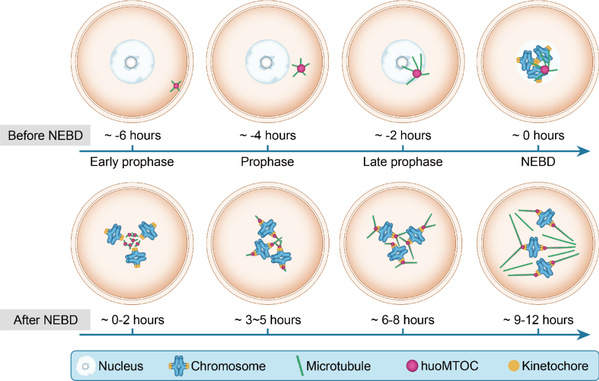Spindle assembly is essential for ensuring accurate chromosome transmission in both meiosis and mitosis. In somatic cells, mitotic spindle assembly ismediated by duplicated centrosomes, but canonical centrosomes are absent in the oocytes of many species. In rodents, acentriolar microtubule organizing centers (aMTOCs) are responsible for meiotic spindle assembly, but it has long been supposed that human oocytes lack prominent aMTOCs on the meiotic spindle, and the exact mechanism of acentrosomal spindle assembly in human oocytes has remained unclear.
Our study shows that human oocytes possess an aMTOC-like structure, the huoMTOC, that serves as a major site of microtubule nucleation and is required for spindle assembly. The huoMTOCshows drastically different characteristics in terms of number, localization, and composition compared with aMTOCs in mouse oocytes. These findings suggest that a distinct mechanism for the initiation of microtubule nucleation and spindle assembly has evolved in human oocytes. We found that mutations in TACC3 cause defects in spindle assembly by disrupting the structure of the huoMTOC, which leads to clinical oocyte maturation arrest. This suggests that the huoMTOC might be an important biomarker for evaluating the quality of human oocytes.
Our discovery of huoMTOC provides insights into the physiological mechanism of microtubule nucleation and spindle assembly in human oocytes. These findings also improve our understanding of the pathological mechanisms of oocyte maturation arrest.

Title: The mechanism of acentrosomal spindle assembly in human oocytes
©复旦大学生殖与遗传团队 All rights reserved.

 Chinese
Chinese